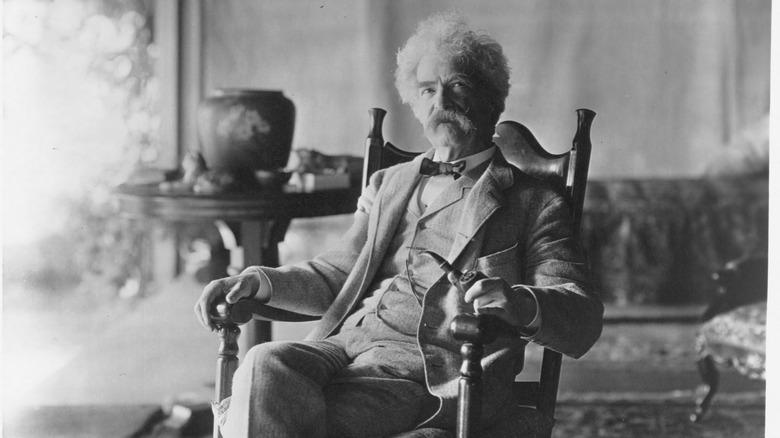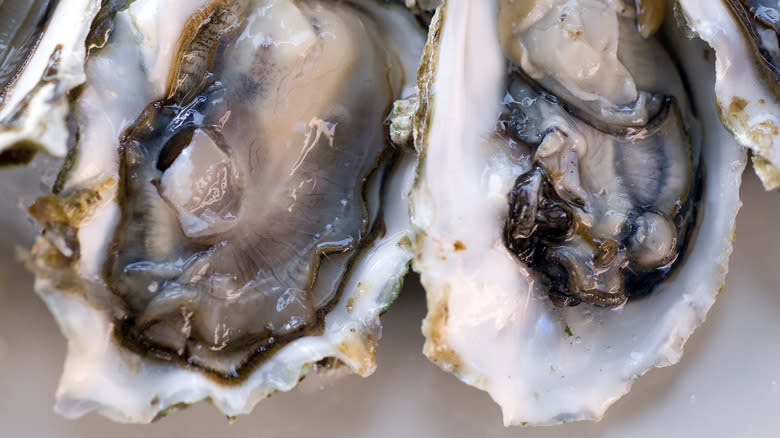Mark Twain's Favorite Food Was One He Enjoyed In Many Forms

- Oops!Something went wrong.Please try again later.
Mark Twain once wrote, "An oyster has hardly any more reasoning power than a scientist has; and so it is reasonably certain that this one jumped to the conclusion that the nineteen million years was a preparation for him; but that would be just like an oyster, which is the most conceited animal there is, except man." It's heady stuff, the human "mortality and self-awareness" condition observed through the lens of a mollusk. But, Samuel Langhorne Clemens wasn't just one of the defining writers of American literary history. He was also easily the biggest oyster fan of all time.
Twain liked his oysters fried, stewed, raw, on the half shell, roasted, in soup, and stuffed into wild poultry. He chowed down on "Hangtown fry," a surf-and-turf platter favored by locals consisting of oysters, bacon, and eggs. Twain even dug savory oyster ice cream, a briny confection that gets a cameo in "Tom Sawyer."
During his stint living in San Francisco, Twain was all about feasting on the indigenous Olympia oysters (aka "Olys") fished out of the Pacific Northwest waters. Olys are small, sometimes purple, and coppery metallic-tasting (they really aren't very good), but Mark Twain loved 'em, or else didn't know any better. The nationally beloved storyteller was known to routinely order Olys by the bushel at the Occidental Hotel, feasting in marathon oyster dinners that lasted from 9:00 p.m. 'till midnight.
Read more: 15 Different Ways To Cook Fish
Twain Was Ordering Oly Oysters

As Twain wrote in 1864, at age 29, his regular evening ambition was "to move upon the supper works and destroy oysters done up in all kinds of seductive styles," via Smithsonian Magazine. After landing in San Francisco following a grueling stint mining quartz in Washoe, Nevada, he raved that "the Occidental Hotel is Heaven on the half shell." Indeed, even his metaphor for the Good Place was oyster-centric. Those Olys fueled Twain's writing as a reporter for the "Call," the "Golden Era," and the "Californian" publications, penning impassioned diatribes of righteous political outrage against local police corruption and laying the foundation for what would become his public literary breakthrough in 1865.
In 1880, during a long trip abroad, a homesick and hungry Twain wrote a comprehensive list of all the American foods he was excited to eat once he arrived back in the States. In "A Tramp Abroad," the quasi-sequel to his 1869 "The Innocents Abroad," fried oysters, stewed oysters, oyster soup, and "oysters roasted in shell-Northern style" made the list of 60 items. Perhaps he would have washed them down with his favorite whiskey cocktail or plain old "ice-water -- not prepared in the ineffectual goblet, but in the sincere and capable refrigerator."
Read the original article on Tasting Table

